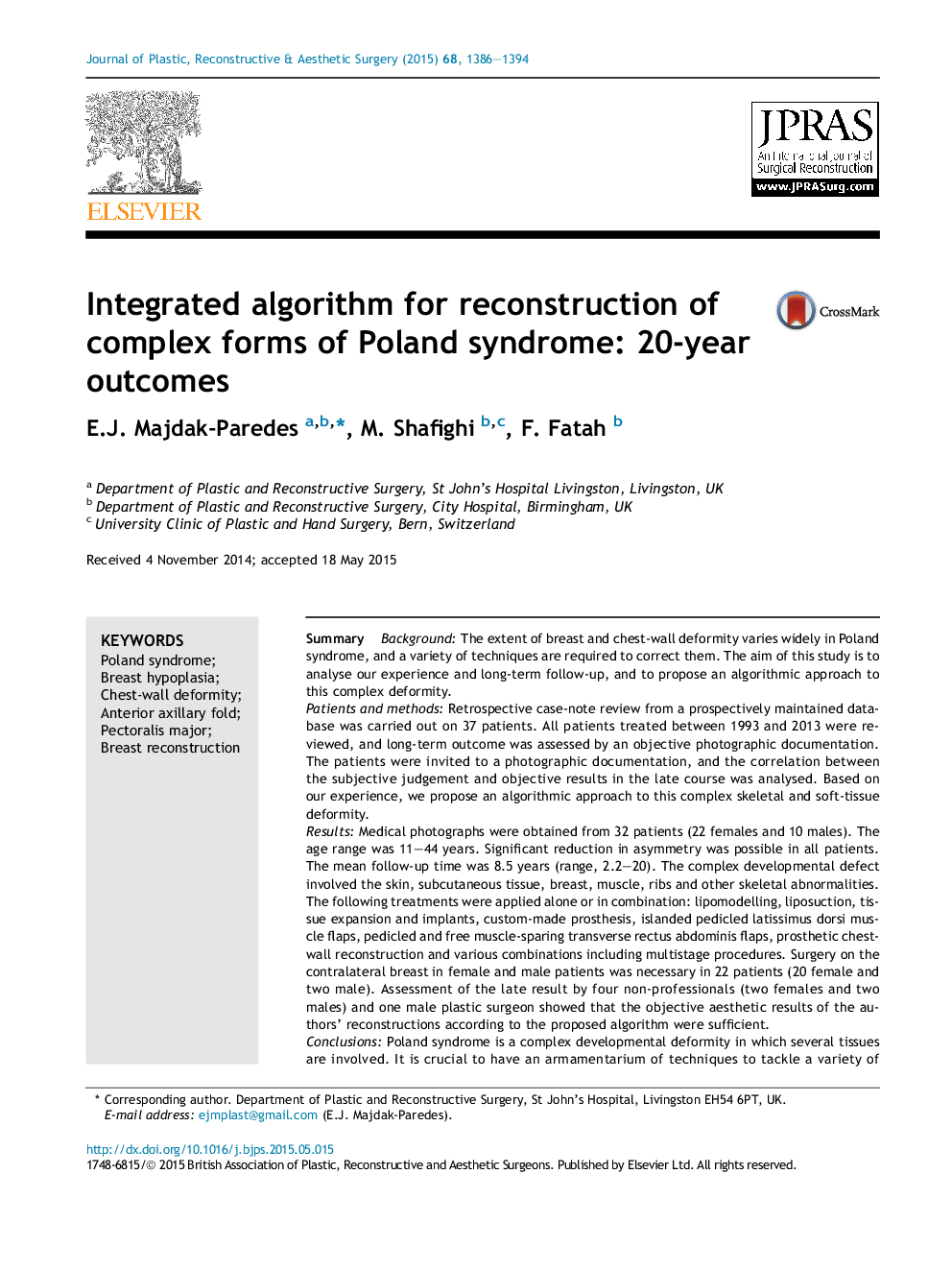| Article ID | Journal | Published Year | Pages | File Type |
|---|---|---|---|---|
| 4117686 | Journal of Plastic, Reconstructive & Aesthetic Surgery | 2015 | 9 Pages |
SummaryBackgroundThe extent of breast and chest-wall deformity varies widely in Poland syndrome, and a variety of techniques are required to correct them. The aim of this study is to analyse our experience and long-term follow-up, and to propose an algorithmic approach to this complex deformity.Patients and methodsRetrospective case-note review from a prospectively maintained database was carried out on 37 patients. All patients treated between 1993 and 2013 were reviewed, and long-term outcome was assessed by an objective photographic documentation. The patients were invited to a photographic documentation, and the correlation between the subjective judgement and objective results in the late course was analysed. Based on our experience, we propose an algorithmic approach to this complex skeletal and soft-tissue deformity.ResultsMedical photographs were obtained from 32 patients (22 females and 10 males). The age range was 11–44 years. Significant reduction in asymmetry was possible in all patients. The mean follow-up time was 8.5 years (range, 2.2–20). The complex developmental defect involved the skin, subcutaneous tissue, breast, muscle, ribs and other skeletal abnormalities. The following treatments were applied alone or in combination: lipomodelling, liposuction, tissue expansion and implants, custom-made prosthesis, islanded pedicled latissimus dorsi muscle flaps, pedicled and free muscle-sparing transverse rectus abdominis flaps, prosthetic chest-wall reconstruction and various combinations including multistage procedures. Surgery on the contralateral breast in female and male patients was necessary in 22 patients (20 female and two male). Assessment of the late result by four non-professionals (two females and two males) and one male plastic surgeon showed that the objective aesthetic results of the authors' reconstructions according to the proposed algorithm were sufficient.ConclusionsPoland syndrome is a complex developmental deformity in which several tissues are involved. It is crucial to have an armamentarium of techniques to tackle a variety of defects to meet patients' expectations, and to improve their quality of life. The clinical outcome of the currently presented algorithm proved beneficial in the decision process for the treatment of these congenital deformities.
